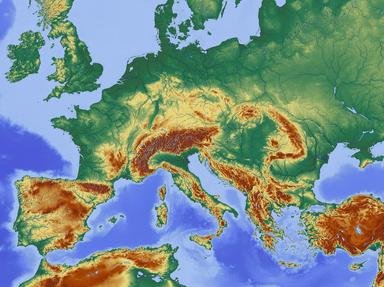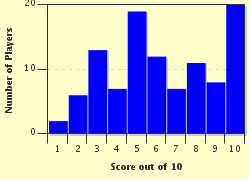Quiz Answer Key and Fun Facts
1. This monument in Gazimestan, about five km from the national capital of Pristina, commemorates the Battle of Kosovo, in which the armies of the Serbian Prince Lazar and the Ottoman army led by Sultan Murad I virtually annihilated each other. The battle temporarily slowed the expansion of the Ottoman Empire, but weakened the Serbian principalities to such an extent that they were eventually brought under Ottoman rule. In what century did this epochal battle occur?
2. These are the ruins of the fortress at Novo Brdo. In the fourteenth century, Novo Brdo was a significant town in need of defense for which of the following reasons?
3. This statue in Pristina depicts a fifteenth century Albanian nobleman who has been considered an inspirational example of Christian resistance to the expansion of the Ottoman Empire. He is esteemed by many throughout the Balkans, and not considered the least bit scandalous (no matter what his name sounds like). Subject of numerous pieces of music and literature, including an opera by the Italian composer Antonio Vivaldi and a poem by the American poet William Wadsworth Longfellow, by what name is he usually known?
4. Until 2011, this monument built in 1957 stood in Pristina, located between the buildings that house the national and municipal assemblies. The three columns joined near their tops represent the 'Unity and Brotherhood' of the three main ethnic groups of Kosovo. Albanians are the majority group; what are the two significant minority groups?
5. This sculpture, intended to celebrate the independence of Kosovo, was unveiled on the day independence from Serbia was declared (for the second time, but this time with widespread international recognition). On what date was it first seen by the public?
6. The River Ibar divides the city of Kosovska Mitrovica into two parts with dramatically different ethnic makeups. Northern Kosovska Mitrovica is predominantly Serbian, and acts as the de facto capital of the region known before partition as Ibarski Kolasin. By what name is this region more commonly known now?
7. This map shows the locations where bombs containing depleted uranium were dropped in 1999 as part of the Kosovo War. Which combatant group was responsible for this controversial bombing?
8. This springtime picture taken in the Prokletije mountains on the border between Kosovo and Albania shows a glacial lake situated near the peak of what is usually considered the highest mountain in Kosovo. What is its name?
9. This picture shows the peaks of Treskavec (on the left) and Kobilica (on the right). They are located in the Sar mountain range that extends from Albania through the southern part of Kosovo to the Republic of Macedonia. Which of these activities is a major tourist attraction in the area?
10. Aside from having been born in Pristina, what do Besart Berisha and Labinot Haliti have in common?
Source: Author
looney_tunes
This quiz was reviewed by FunTrivia editor
Pagiedamon before going online.
Any errors found in FunTrivia content are routinely corrected through our feedback system.

